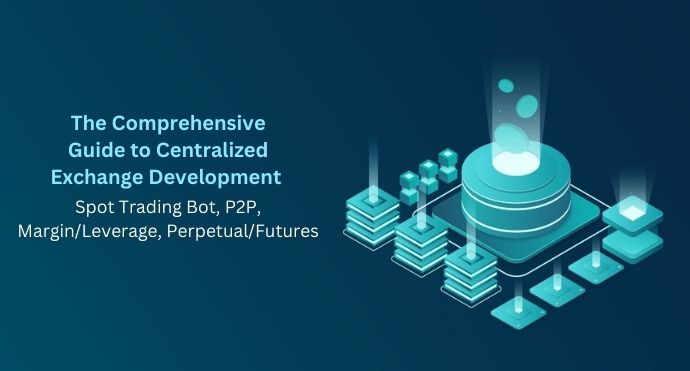Centralized exchanges (CEX) have become the backbone of the digital asset trading ecosystem, enabling users to buy, sell, and trade various cryptocurrencies. As the demand for secure and feature-rich exchanges rises, developers have been working on advanced CEX solutions to cater to the diverse needs of traders. In this blog, we will explore four prominent CEX development services: Spot Trading Bot, P2P Trading, Margin/Leverage Trading, and Perpetual/Futures Trading, and their respective pros and cons.
Spot Trading Bot:
Spot trading refers to the immediate exchange of cryptocurrencies at the current market price. Spot Trading Bots are automated tools designed to execute trades on behalf of users, providing benefits such as:
Pros:
24/7 Trading: Spot Trading Bots can trade non-stop, taking advantage of market movements even when traders are not actively monitoring.
Speed and Efficiency: Bots can execute trades faster than humans, reducing latency and ensuring timely responses to market changes.
Eliminate Emotional Bias: Automated trading eliminates human emotions from decision-making, leading to more disciplined and consistent strategies.
Cons:
Learning Curve: Setting up and configuring Spot Trading Bots can be complex, requiring technical knowledge and experience.
Risk of Bugs and Glitches: Bots are prone to technical issues that can lead to unexpected trading outcomes if not carefully monitored.
Market Dependency: Spot Trading Bots’ effectiveness relies heavily on market conditions, making them less reliable during periods of extreme volatility or low liquidity.
P2P Trading:
Peer-to-peer (P2P) trading platforms connect buyers and sellers directly, removing the need for intermediaries and enhancing decentralization.
Pros:
Direct Transactions: P2P platforms facilitate direct and secure transactions between traders, reducing the risk of fraud or theft.
Privacy and Control: P2P trading allows users to negotiate terms and conduct transactions privately, offering greater control over their trades.
Global Accessibility: P2P trading opens up opportunities for users in regions with limited access to traditional banking systems.
Cons:
Security Concerns: Users must exercise caution when trading with unknown counterparts to avoid potential scams or fraudulent activities.
Limited Liquidity: P2P platforms may have lower liquidity compared to centralized exchanges, leading to potentially higher spreads and slower trade execution.
Disputes and Escrow: In the case of disputes, resolving issues may require time-consuming escrow processes, affecting the overall trading experience.
Margin/Leverage Trading: Margin or Leverage Trading allows users to amplify their buying power by borrowing funds to trade with leverage.
Pros:
Increased Profit Potential: Leverage allows traders to magnify their profits on successful trades, making it an attractive option for experienced investors.
Diversified Strategies: Margin trading enables traders to explore more complex and diverse strategies with limited capital.
Hedging: Leverage can be used for hedging purposes, reducing the risk exposure to specific assets.
Cons:
High Risk: Leverage trading significantly increases the risk of losses, and traders can face liquidation if the market moves against their positions.
Margin Calls: Sudden market fluctuations may lead to margin calls, requiring additional funds to maintain positions and potentially leading to forced liquidation.
Complexity: Margin trading requires a thorough understanding of risk management, financial markets, and trading mechanics to avoid significant losses.
Perpetual/Futures Trading: Perpetual and Futures Trading allows users to speculate on the future price movements of cryptocurrencies without owning the underlying assets.
Pros:
No Ownership Required: Traders can speculate on crypto prices without the need to own the assets physically, reducing storage and security concerns.
Advanced Trading Tools: Perpetual and Futures Trading offer advanced trading features like leverage, allowing users to maximize potential profits.
Risk Hedging: Futures contracts enable traders to hedge against potential losses in their existing cryptocurrency positions.
Cons:
Market Volatility: Perpetual and Futures Trading are subject to market volatility, increasing the risk of large price swings and liquidations.
Funding Rates: Perpetual contracts may require traders to pay or receive funding rates at specific intervals, affecting trading costs.
Complexity: Futures Trading involves complex concepts like basis, funding, and expiry dates, which may be challenging for inexperienced traders.
Conclusion:
Cryptocurrency Exchange Development has paved the way for innovative trading solutions catering to the varying needs of crypto traders. Each CEX service comes with its own set of advantages and drawbacks, requiring traders to assess their risk tolerance, expertise, and investment goals carefully. From Spot Trading Bots to P2P, Margin/Leverage, and Perpetual/Futures Trading, the rapidly evolving landscape of cryptocurrency exchanges continues to revolutionize the way we interact with digital assets.



